Diversity of Soil Organisms
If it wasn’t for organisms living in and on the soil, no dead organic matter would ever break down, or “decompose”. This decomposition keeps these materials from building up and allows nutrients to be released and reabsorbed by living plants.
Most of the living creatures in the soil are microscopic organisms or microbes, such as bacteria and fungi. Soil microbes consume organic matter by breaking it down into a partially decomposed and reworked material called humus. Through decomposition, microbes get the energy and nutrients they need to grow, and release enough nutrients into the soil for plant growth. Ninety percent of all nutrients that plants need to grow come from the decomposition of the organic matter from the previous generation of plants.
More information on soil organisms:
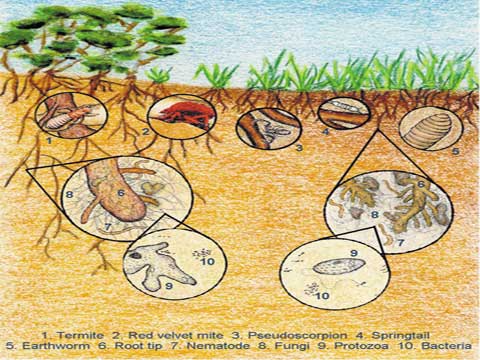
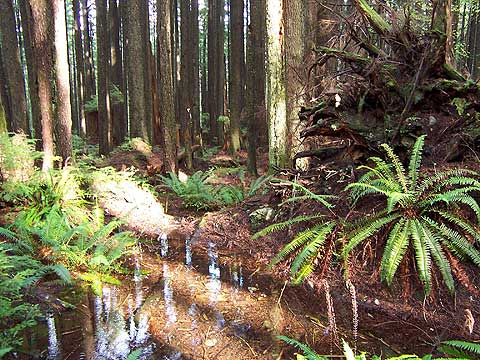
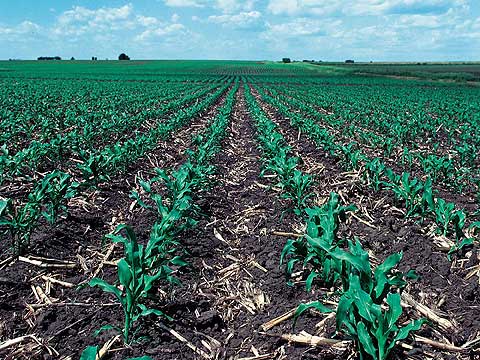
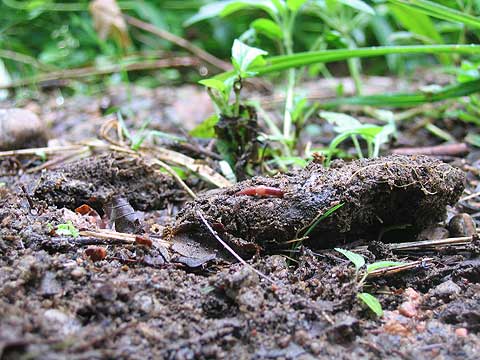
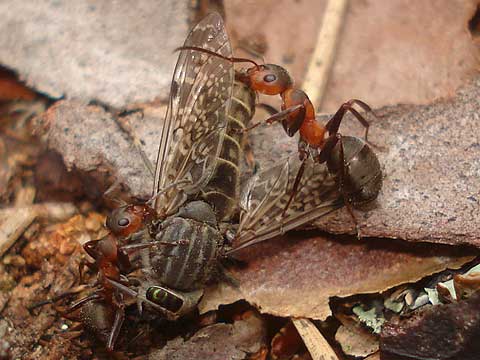

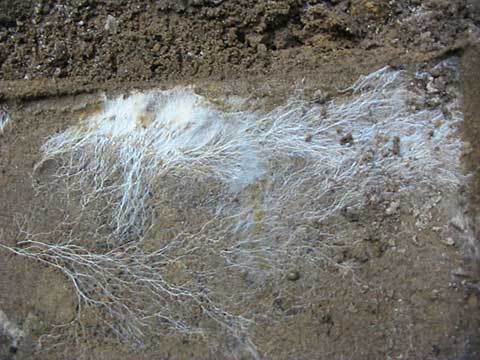
In addition to microbes, many animals live in the soil. These soil fauna range in size from tiny (microscopic) such as mites, to large, such as earthworms and centipedes. They modify soil structure as they burrow and move through the soil and alter the makeup of the microbial community by selectively feeding on bacteria and fungi.
Earthworms are an important group of “macro-fauna” (i.e. big animals) in soils. In most of Canada earthworms are actually non-native (i.e. were brought here from other countries by humans). In all soils, earthworms ingest plant litter and soil organic matter and stimulate decomposition. In the short-term, this results in release of important nutrients required by plants – this is why earthworms are good for the fast-growing plants in agricultural or garden soils. However, in temperate forests, this rapid removal of the litter and organic matter means that forest plants, accustomed to a thick layer of slowly decomposing leaf litter, may have trouble re-establishing or growing. Because earthworms are non-native in temperate forest ecosystems, and their dispersal is associated with humans, more disturbed forest ecosystems tend to have more earthworms.
Although earthworms are traditionally thought of as being universally “good” in gardens and agricultural fields, the same is not necessarily true in forests. Most forests in Canada did not have earthworms until the European colonists came, and earthworms are now readily spread even to remote areas by humans along forest roads and through discarded fishing bait. To learn more about how earthworms alter forest soils click here.
More information on soil organisms:

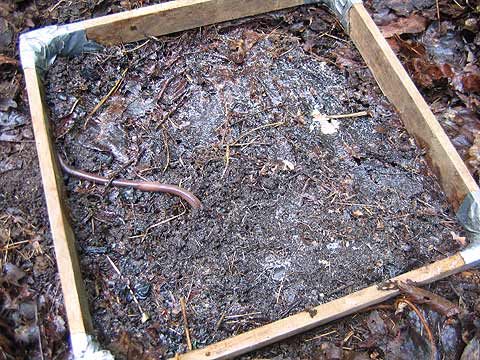
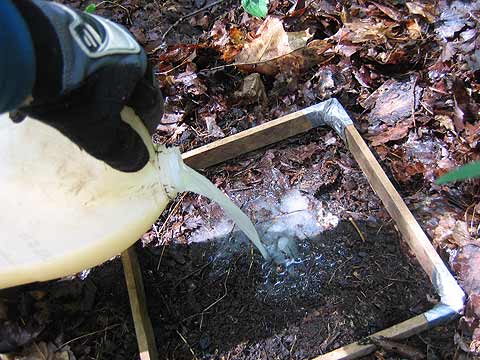
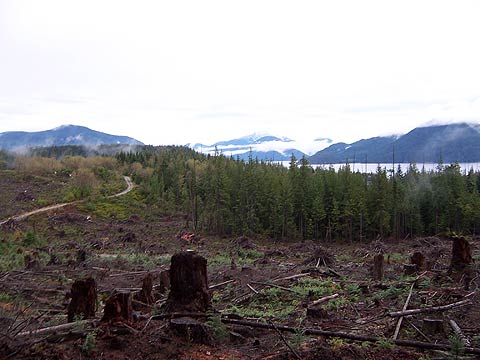
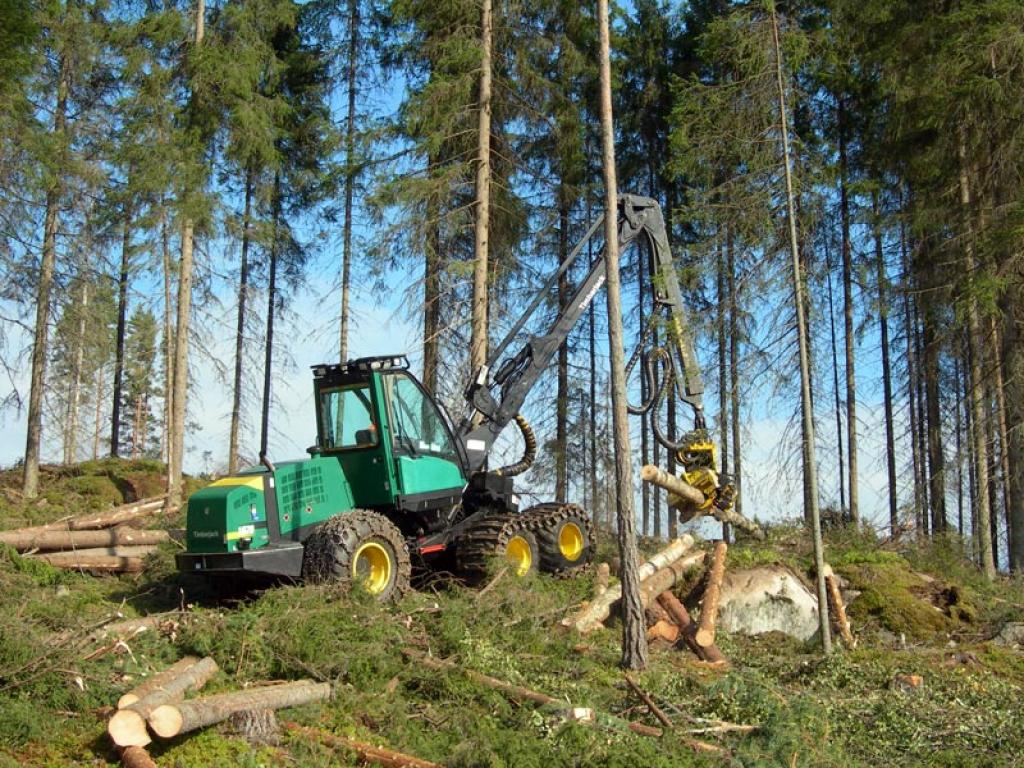

Dr. Nathan Basiliko’s research group, at the University of Toronto Mississauga, studies soils and the organisms that live within it. In one study, they are researching non-native earthworms in forest soils. The main goal of this study is to determine how long-term forest sustainability (i.e. healthy growth of trees and other forest plants) will be affected by the presence of non-native earthworms in the forest soils. To accomplish this goal they need to observe the effect of earthworms on all the important aspects of the forest ecosystem. These include experiments testing how earthworms alter the micro-organisms in the soil – remember that these microbes are the most important players in regulating the decomposition of organic matter. They are also studying how earthworms affect the availability of nutrients in the forest soil (required for plant growth), and how earthworm burrowing affects the distribution of organic matter and nutrients in the soil. To learn more about Dr. Basiliko’s projects click here.
The research team included:
- Nathan Basiliko, Assistant Professor, Department of Geography, University of Toronto at Mississauga
- Tara Sackett, Post-doctoral research fellow, Department of Geography, University of Toronto at Mississauga
More Resources
In this exercise you will construct a collection apparatus (Berlese funnel) to collect and observe the small fauna that live in leaf litter and the organic horizon of the soil in a forest ecosystem.
Download the exercise as a PDF file.
In this exercise you will compare the abundance of earthworms in disturbed and natural areas, and use these numbers to extrapolate to the numbers of earthworms found in larger areas.
The goal of Canada Worm Watch is to survey earthworms and the habitats in which they live. The site is full of great scientific information on earthworms and also has some great activities and resources, including a detailed taxonomic key.
This site provides tools and resources that will help participants document the distribution of exotic earthworms and their impacts across the region. There are also resources for educators to help build understanding of the methods and results of scientific research about exotic earthworms and forest ecosystems ecology.
- Earthworm Farm
- How Fast Does it Rot?
- What Lives in Your Soil?
These exercises will allow students to observe soil fauna and assess how organic matter decays.
Click here for the NRCS Soil Biology Exercises PDF
NRCS Soil Biology Primer
This document provides more detailed information on soil biology including the many different fauna that make up the soil foodweb.
Prescribed learning outcomes (PLO) are content standards for the provincial education system; they are the prescribed curriculum. The “Critters Beneath our Feet” research project and activities will help students to achieve the BC PLOs listed below.
PLOs are listed by code for different courses. Please consult the appropriate Integrated Resource Package (IRP) to identify the PLOs. A catalogue of the BC Curriculum Documents (including IRPs) can be found here: http://www.bced.gov.bc.ca/irp/all.php?lang=en#
- General Content
- Science 10 – Life Science: Sustainability of Ecosystems (B1, B3)
- Biology 11 – Taxonomy (B1); Ecology (D1); Animal Biology (G1, G3)
- Geography 12 – Biomes (E1-E4); Resources and Environmental Sustainability (F2)
- Sustainable Resources 11 – Agriculture (A2); Forestry (C2, C3)
- Sustainable Resources 12 – Agriculture (B4, D4); Forestry (B1-B4, E2, E4)
- Student Activities *** Links to Exercise 1 & 2 need to be switched***
- 1) Critter Catcher (need to insert mite and springtail pictures into doc)
- Processes of Science (A1-A3); Taxonomy (B1); Ecology (D1); Animal Biology (G1, G4)
- 2) Exploring Earthworms
- Biology 11 – Processes of Science (A2); Taxonomy (B1); Ecology (D1); Animal Biology (G1, G3)
- 1) Critter Catcher (need to insert mite and springtail pictures into doc)